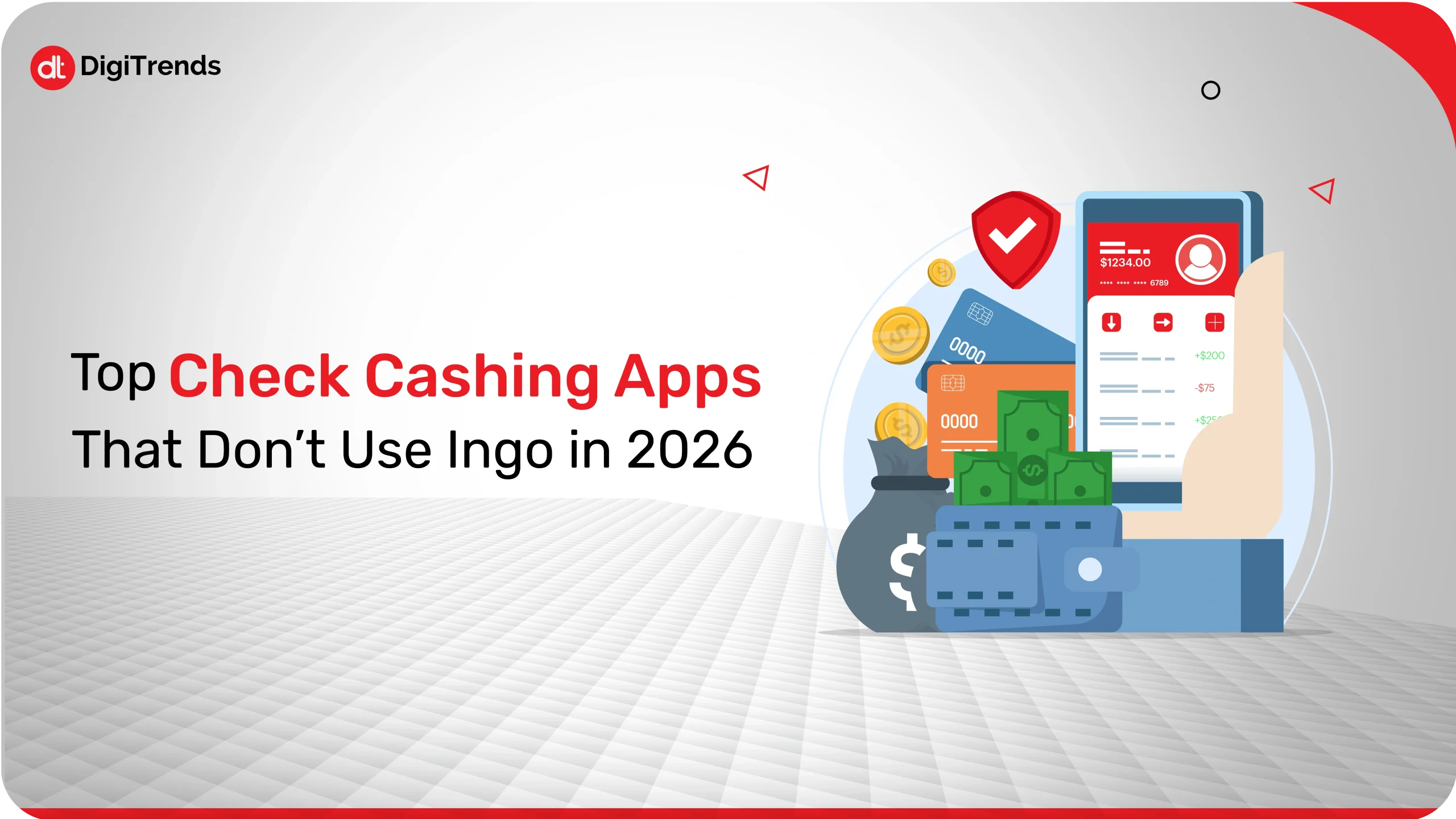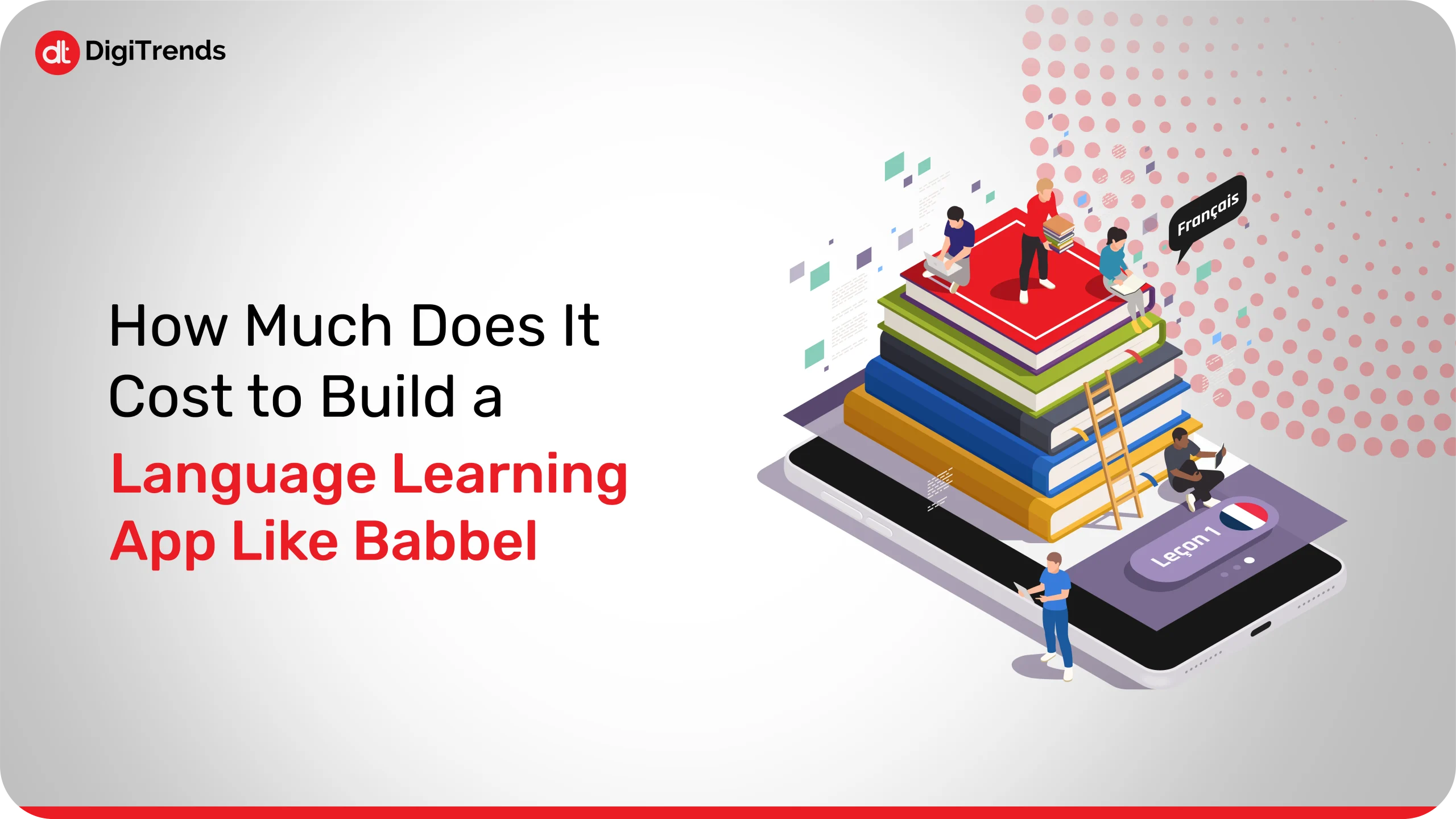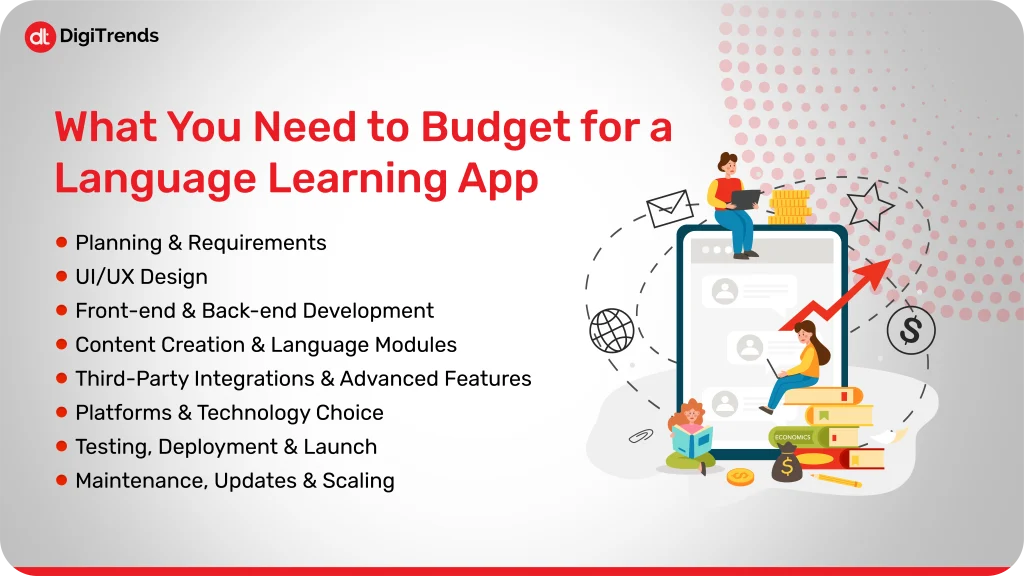
Top Check Cashing Apps That Don’t Use Ingo in 2026
Looking for an app where you can find a mobile check deposit with instant funds availability?. Explore the best check cashing apps in 2025.
Continue Reading
Looking to build a language learning app like Babbel?
Well, it might be one of the best decisions you can make right now. According to recent reports, the Global Language Learning App Market size is expected to be worth around USD 16.2 billion by 2033. These numbers depict the vast opportunity present in this market.
However, it is also not easy to build a language learning app because user expectations have changed; they now expect engaging content, a seamless experience across various devices, and innovative features such as speech recognition, offline lessons, gamification, and personalization.
If you are someone considering building a language learning app, you’ll have to keep in mind the user expectations and the major players of the market you are competing with, for example, Duolingo and Babbel.
This doesn’t only mean that you’ll have to plan the features of your app thoughtfully, but you’ll have to invest thoughtfully too. For example, choosing the right platforms and planning for maintenance and scale. If you overlook any of these elements, it may raise your costs and increase the risk of your app failing to gain traction.
Let’s explore how much it costs to build a language learning app like Babbel, how to build a similar app, and ways to optimize your spend while still delivering value.
Babbel is a language learning app developed by a Berlin-based company called Babbel GmbH. It is a subscription-based mobile and web platform designed to help users learn new languages with the help of structured lessons, audio content, and practical dialogue exercises.
Here’s the breakdown of how Babbel works and why it is different:
Babbel is a mature language learning app, and what makes it different is that it combines bite-sized lesson design, real-world conversational focus, and even technological enhancements to help with pronunciation and retention. Understanding how the Babbel app operates is important as it will give you useful insight into the features and content investment you may need if you’re planning to build your own language learning app.

Building a language learning app is not a basic process; it has a lot of layers to it. Every stage of it affects both value and cost, and skipping any of the steps might affect how well your app performs in the real world. To plan realistically, you’ll need to understand what each phase involves and what it typically costs. Let’s break it down.
Whenever you think about building something, the most important things are proper planning and this stage includes defining your target audience, languages to include, learning goals, features, and revenue model. It’s also the stage when you set the tone for your brand, for example, academic, casual, or gamified.
At this stage, you will also conduct competitor analysis (looking at Babbel, Duolingo, and Memrise), define user personas, and create a roadmap for the project.
Estimated Cost: $2,000 – $10,000
There is no doubt in the fact that the design of an app can make or break it. This is because users will only stay and come back if the interface of the app is intuitive and visually clean. This phase involves wireframing, prototyping, and designing interfaces for mobile and web platforms.
What you should focus on while designing the mobile learning app is clear navigation, engaging colors, interactive buttons, and typography that supports multiple languages. Go for accessibility, like readable fonts and contrast, which is equally important for learners of all ages.
Estimated Cost: $5,000 – $15,000
The development is going to be the heart of your language learning app. The front-end handles the user interface, which learners see and interact with. The back-end manages the database, APIs, servers, and all behind-the-scenes operations.
The cost at this stage will vary significantly according to the complexity and platforms (Android, iOS, or both) involved, and if you wish to add other features like AI, personalization, and offline sync, the cost will increase.
Estimated Cost: $25,000 – $100,000
You might think that the biggest investment in a language learning app would be technology, but it is content creation and language modules. This is because you can’t just rely on technology; your lessons need quality structure and authentic content.
At this stage, you will have to create language courses, vocabulary lists, grammar modules, exercises, and audio/video clips. You may need linguists, native speakers, and instructional designers to craft accurate lessons.
If you wish to have more than one language, then the costs will also increase as each language requires different content.
Estimated Cost: $5,000 – $20,000 per language
This is the stage where your app will start feeling intelligent and engaging. Integrations like:
Each integration will improve the user experience as well as add to the overall cost. These features might be costly, but they will also make your language learning app more competitive, and can also double your development timeline if done from scratch.
Estimated Cost: $10,000 – $40,000
The technology stack you choose will shape how your app performs and scales. You’ll decide between:
Native Development: Separate apps for iOS (Swift) and Android (Kotlin).
Cross-Platform: Single codebase using Flutter or React Native.
Native apps offer smoother performance but a higher cost. Cross-platform frameworks are more budget-friendly but may limit some advanced features.
Estimated Cost:
The testing stage is important as it will help you be sure that the app is working the way it should. This phase includes usability testing, performance testing, compatibility checks across devices, and bug fixing.
You’ll also handle deployment, setting up app store listings, beta testing, and marketing prep for launch.
Estimated Cost: $5,000 – $20,000
Building an app doesn’t end when you launch it; it is actually an ongoing project. Apps need frequent maintenance and updates. Maintenance includes fixing bugs, adding new lessons or languages, updating the tech stack, and optimizing performance.
You will also, in the future, budget for scaling, like adding servers as your user base grows, improving analytics, and responding to OS updates.
Estimated Cost: 20–30% of total development cost annually
A language learning app is not just some other code; it is a curated mix of content, design, and technology working together. On average, the total cost can range from $40,000 for a basic MVP to $200,000+ for a full-featured, AI-driven solution.
The smartest approach that you can take is to start small, validate your idea with real users, and scale as you grow. This will let you control your costs, and you can still build a product that delivers results and stands out.
It is not necessary to start with a full feature set of Babbel to get started with your language learning app. You can choose to start with an MVP, which is a basic version with only essential features. You can scale the app later by adding more features.
However, you can also choose to aim straight for a fully loaded app with advanced personalization, AI-based features, and gamified learning paths.
Here’s how the cost differs between a basic and an advanced version:
| Version | Description | Estimated Cost (USD) |
| Basic App (MVP) | Core features like lessons, quizzes, and progress tracking. Single platform with simple UI. | $40,000 – $70,000 |
| Advanced App | Includes AI-based speech recognition, gamification, analytics, and multi-platform support. | $120,000 – $200,000+ |
If you choose a basic version, you will be able to launch quickly and gather user feedback to improve in the future, and if you choose to go with an advanced version, it will be more expensive, but you can build a stronger brand presence and user experience from day one.
A language learning app like Babbel can earn revenue through several proven models. The most common is a subscription plan, monthly, quarterly, or yearly. You can also offer a freemium model, where basic lessons are free and advanced modules are paid. Other options include in-app purchases for premium content, ads for free users, and partnerships with educational institutions or language schools.
The key is to balance profitability with user experience so the learning journey feels valuable, not transactional.
The cost of language learning app development can vary widely based on multiple factors. Understanding these helps you plan smarter and avoid overspending in areas that don’t directly impact user experience or business growth.
Here are the main elements that shape your total development cost:
The more complex your app, the higher the cost. Basic apps include lessons, quizzes, and progress tracking, while advanced ones add features like AI-based speech recognition, gamification, or personalized learning paths, all of which require more time and specialized developers.
Building for one platform (Android or iOS) is cheaper. Going cross-platform or adding a web version increases cost but also expands your user base. If your target audience is global, cross-platform development often makes more sense.
Good design isn’t just about looks; it defines usability. A clean, intuitive, and responsive design requires more design hours, but it directly impacts engagement and retention. In other words, better design costs more upfront but pays off in the long run.
Unlike regular apps, a mobile learning app depends heavily on educational content, vocabulary, audio recordings, grammar lessons, and quizzes. Whether you hire linguists or license existing content, this part takes a significant share of your budget.
Choosing between native development (Swift, Kotlin) or cross-platform tools (Flutter, React Native) affects both performance and cost. Advanced features like AI-based pronunciation feedback, analytics, or real-time sync require more robust backend systems and higher costs.
Where your development team is based makes a big difference. Developers in the US or Western Europe charge more than those in Asia or Eastern Europe. You can balance cost and quality by outsourcing specific parts, like design or backend work, to specialized teams.
Integrations like payment gateways, AI APIs, or cloud storage add convenience but come with licensing or subscription costs. These also add complexity to development and testing.
Once your app is live, you’ll need continuous maintenance, bug fixes, new lessons, feature improvements, and server scaling. Budgeting for this from the start keeps your app stable and relevant.
A great app won’t succeed if no one knows about it. Marketing, app store optimization, and user acquisition campaigns add to your total cost but are essential for traction and early growth.
When you look at Babbel’s success, it’s clear that its strength lies in how seamlessly it combines technology, design, and pedagogy. If you’re planning to build a mobile learning app, these are the core features you’ll need to consider, each contributing directly to user engagement, retention, and learning outcomes.
The heart of any language learning app is its lessons. Babbel keeps them short and focused, usually around 10–15 minutes, to make learning consistent and less intimidating. Your app should do the same, deliver small, achievable chunks that guide users from basic vocabulary to full conversations.
This feature lets users practice pronunciation and get instant feedback, making learning more immersive. It’s powered by AI and natural language processing, and while it increases development costs, it also dramatically improves user experience.
Grammar is often what learners struggle with most. Apps like Babbel integrate grammar rules into real-life contexts instead of overwhelming users with theory. Similarly, vocabulary modules help users expand their word bank through repetition and contextual examples.
A good language learning app motivates users to return daily. Gamification, like streaks, rewards, and progress badges, keeps users engaged. Progress dashboards also help users see how far they’ve come, which boosts satisfaction and retention.
AI-driven personalization tailors lessons based on a learner’s goals, past performance, and engagement level. This keeps the experience relevant, which increases completion rates.
One of Babbel’s biggest appeals is offline access. Learners can download lessons and continue studying without an internet connection. For global reach, especially in regions with limited connectivity, this is a must-have.
Modern learners move between devices. A cloud-synced app ensures progress updates automatically, whether the learner uses a phone, tablet, or desktop.
While Babbel itself focuses on self-paced learning, some apps include community spaces where users can connect, discuss, or even practice together. Building even a light version of this feature can foster loyalty and daily engagement.
A subscription-based model (monthly, quarterly, or yearly) works best for language learning apps. Consider offering a free trial or freemium tier to attract users before converting them into paying customers.
To manage growth and content, an admin dashboard is crucial. It helps track lesson performance, learner activity, and retention data, all valuable for iterative improvements.
In short, these features aren’t just add-ons; they define the learning experience. The better these are integrated, the higher your user retention and conversion rates will be.
If you’re planning to build a language learning app, DigiTrends can help you move from concept to launch with a clear, structured process. Our team combines expertise in mobile app development, UI/UX design, and digital strategy to create learning platforms that actually engage users and deliver measurable results.
Here’s how we can help:
We start by understanding your idea, audience, and business goals. From there, we help define the app’s structure, features, and roadmap, so every development decision supports your end goal.
Our design team focuses on creating simple, intuitive interfaces that make learning enjoyable. Meanwhile, our developers handle the technical side, building a scalable, secure, and fast language learning app using modern frameworks and AI-powered tools.
We can help you structure lesson modules, integrate gamification, and set up features like speech recognition, quizzes, and progress tracking. The goal is to make your app both functional and engaging.
Before launch, our QA team ensures everything runs smoothly across platforms. After launch, we track user behavior and performance metrics to help you improve engagement and retention.
We don’t stop at deployment. DigiTrends offers continuous maintenance, updates, and scaling support, so your app stays secure, up-to-date, and ready to grow as your user base expands.
In short, we can help you build a language learning app that’s not just another product on the app store, but a platform learners actually enjoy coming back to.

Building a language learning app like Babbel isn’t just about following a trend; it’s about tapping into a market that’s growing fast and showing no signs of slowing down. People want convenient, personalized ways to learn, and mobile apps have become the go-to solution.
The cost depends on how ambitious you want to go, whether you’re starting with a simple MVP or aiming for a full-scale platform with AI-based features, gamification, and multiple language modules. What matters most is getting the fundamentals right: great user experience, solid content, and reliable performance.
With the right planning, tech stack, and strategy, your app can compete in a global space that values accessibility, innovation, and consistent learning experiences. And if you partner with the right team, you won’t just build an app, you’ll build a brand that empowers users to learn, grow, and connect across languages.